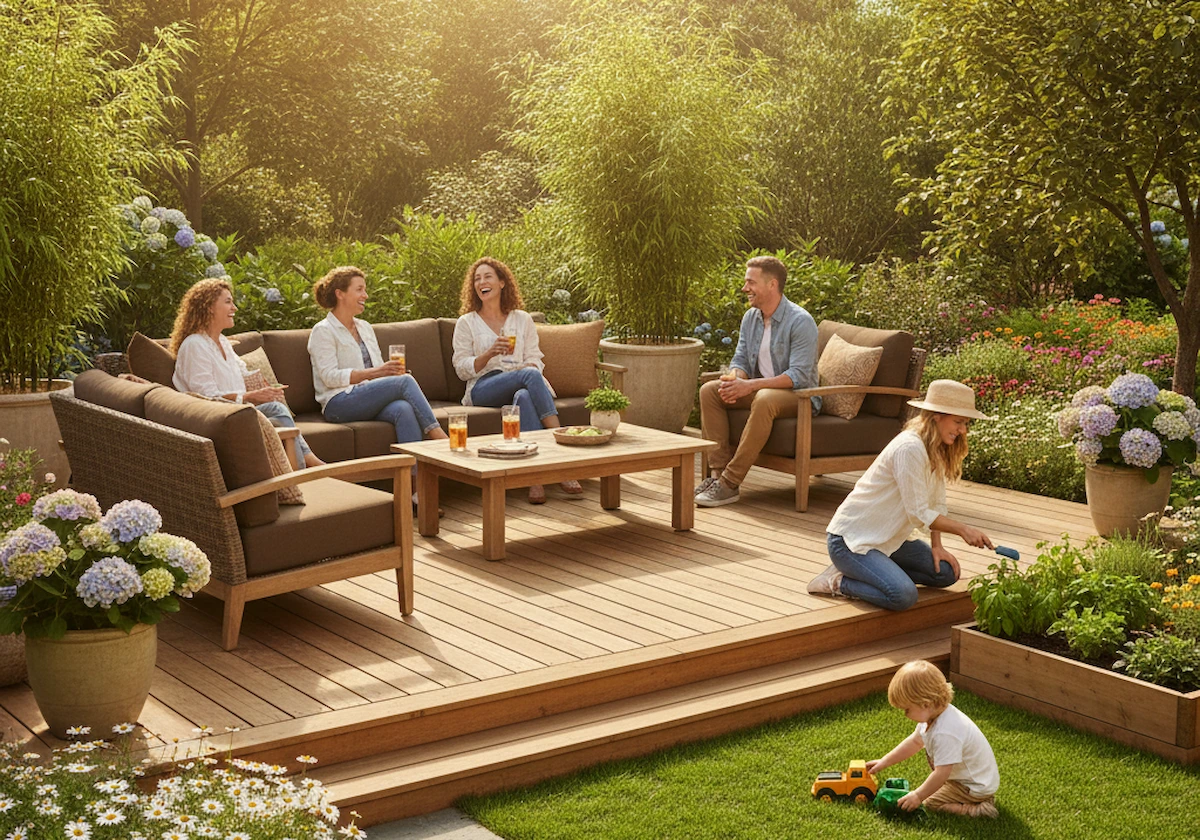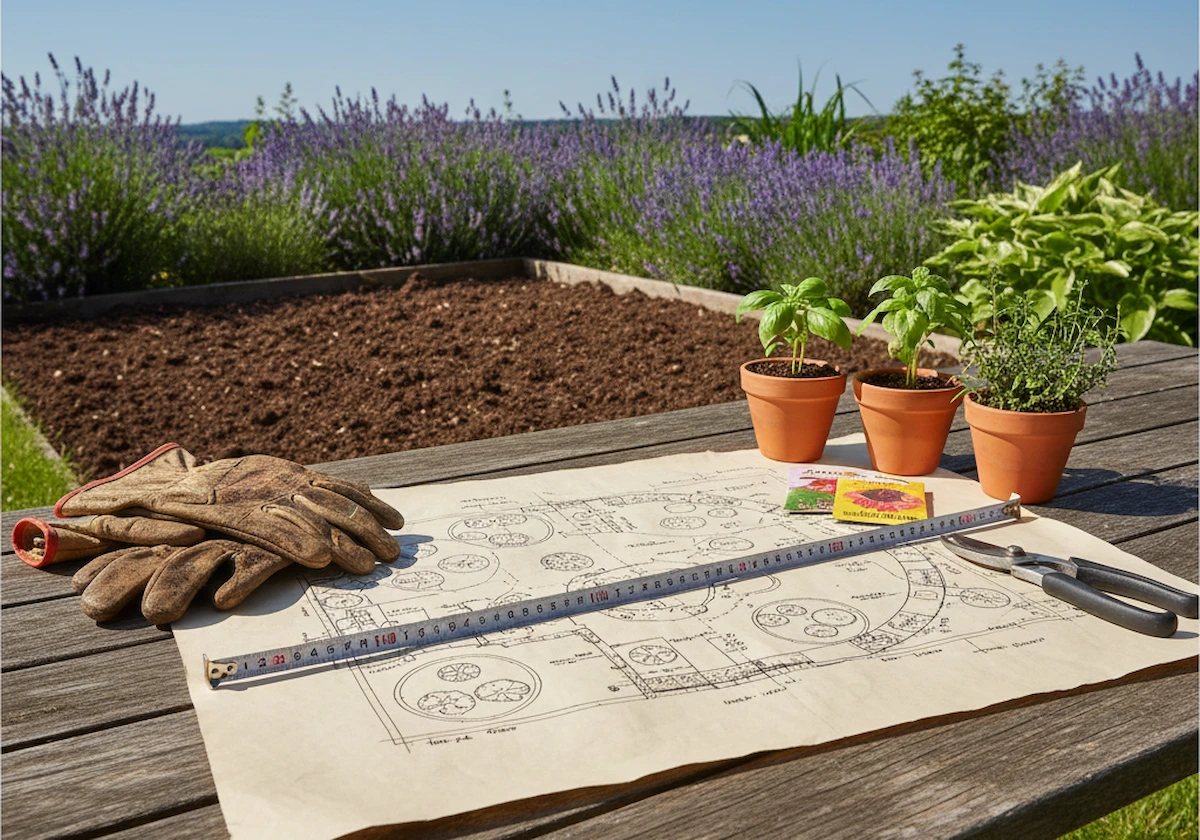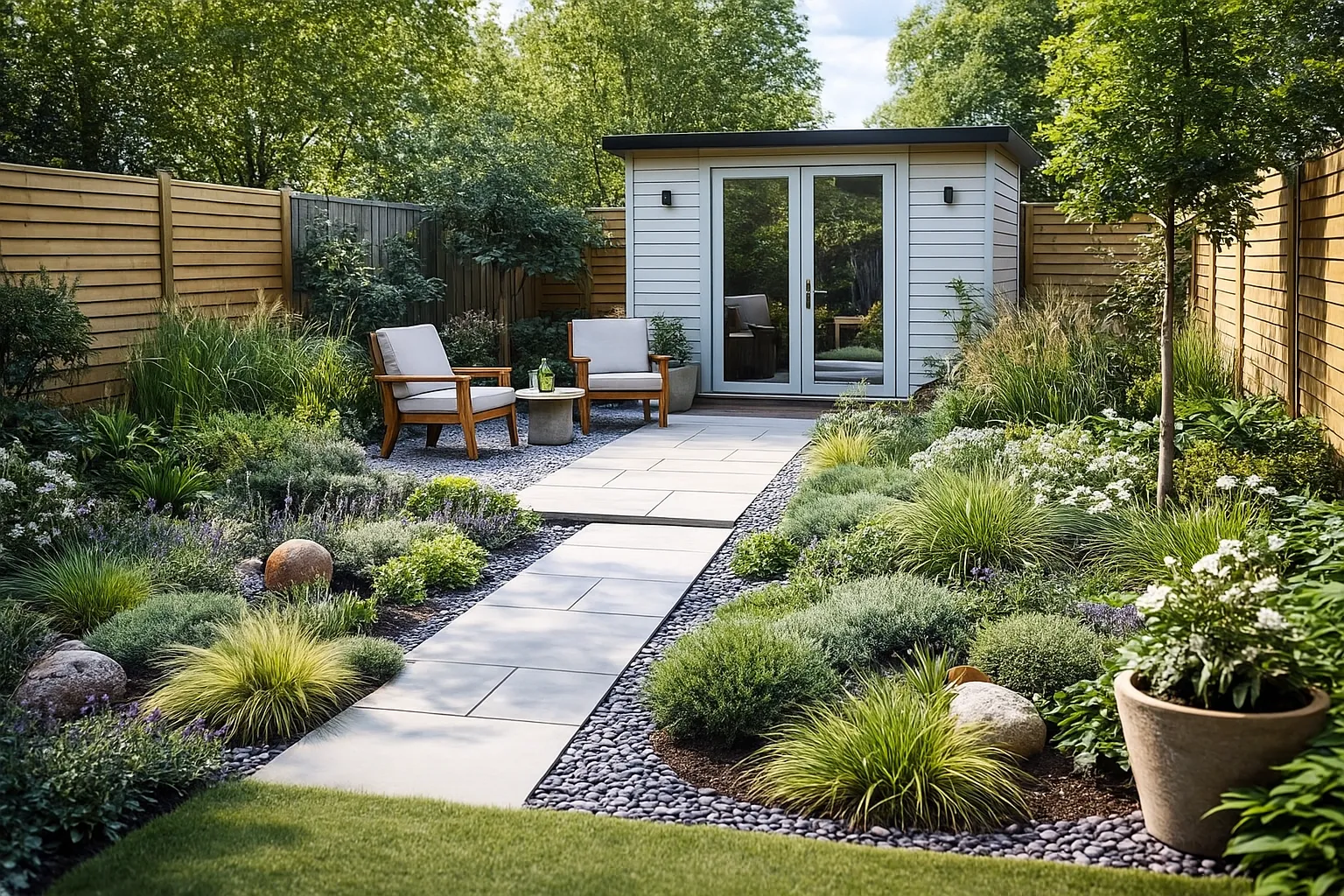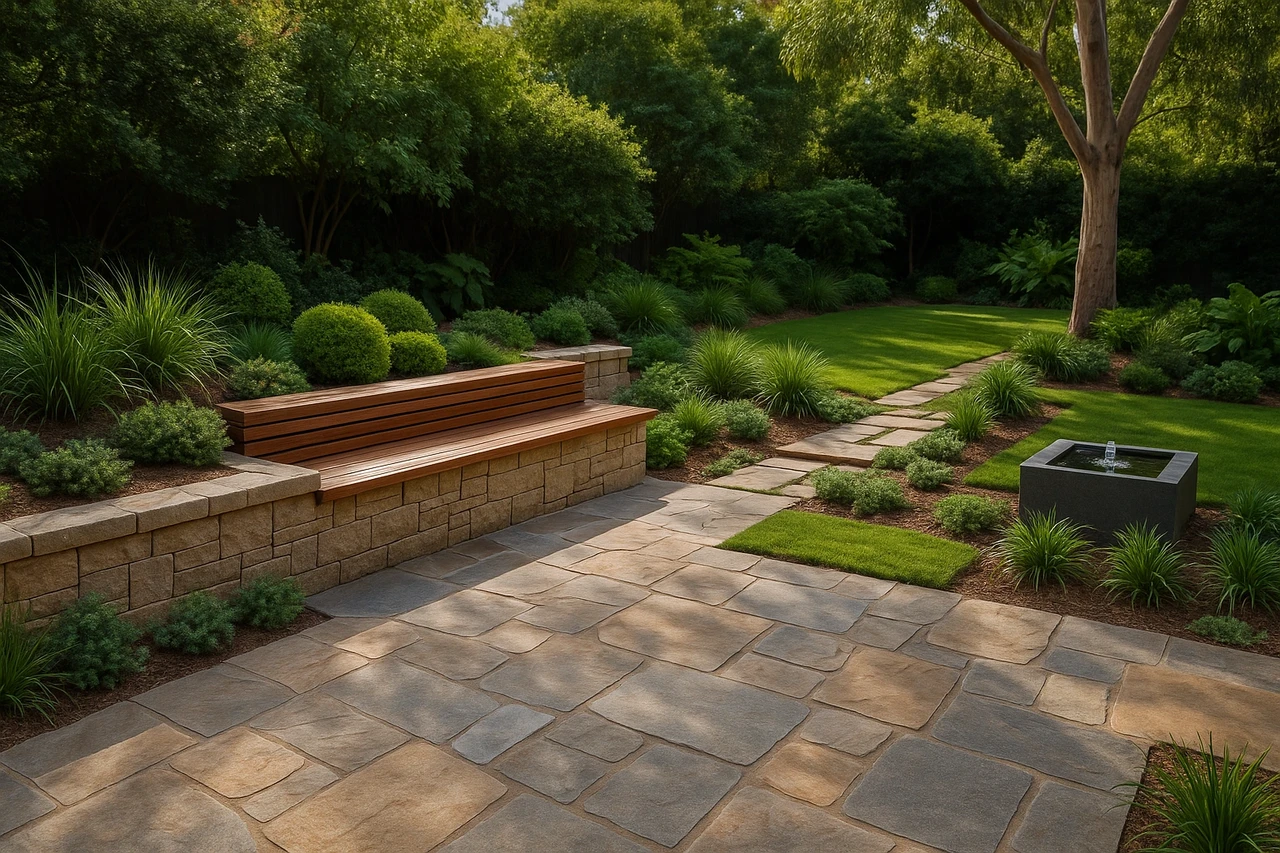Your garden may be gorgeous by day, but when night falls, does it vanish into darkness? Many homeowners invest in landscaping only to see it fade into the shadows when the sun goes down.
What’s the point of that perfect path, that sculptural tree, or that cosy bench if no one can see them after sunset?
Outdoor lighting changes everything. It goes beyond simply making things visible. Good lighting helps you enjoy your space longer, keeps walkways safe, and brings a soft, inviting glow to the parts of your garden you love most.
With a few smart choices, you can create a space that’s just as welcoming after dark as it is in daylight.
In the sections ahead, we’ll share practical tips and inspiring ideas to bring your garden to life after dark. First, let’s take a closer look at why outdoor lighting matters so much more than just appearance.
Why Outdoor Lighting Isn’t Just a “Nice Extra”
Outdoor lighting isn’t just a nice extra because it improves safety, adds security, and makes your space more enjoyable after dark. It can highlight pathways, reduce the risk of accidents, and even increase your home’s value.
A few simple changes can make your space feel safer, more welcoming, and easier to use in the evenings.
- Safety first: Walking around in the dark can be tricky, especially if you have steps, stones, or garden beds to navigate. Adding lights along pathways or near stairs helps everyone move around confidently, from carrying groceries to kids playing outside after dinner.
- Security boost: A well-lit yard feels more secure. Lighting up side gates, corners, and entrances can help discourage intruders and make it easier to see what’s happening outside. Even small motion-sensor lights near doors or sheds can improve the safety feature at nighttime.
- Ambiance matters: The right lighting creates a space you’ll want to spend time in. Soft lanterns, string lights, or garden spotlights add warmth and personality. Suddenly, your garden goes from ‘look at’ to ‘live in’, perfect for a quiet moment or a dinner with friends.
- Extend your living area: Why stay inside just because it’s dark? Light up your patio, deck, or even a little nook with a comfy chair, and you’ve just added a whole new ‘room’ to your home. Outdoor lighting helps you enjoy more of what you already have.
If you’ve put time into making your garden look and feel great, there’s no reason to let it fade after sunset. A few thoughtful lighting choices can help you enjoy it longer, more safely, and in a way that feels completely natural.
Lighting can do a lot for your outdoor space, so let’s take a look at the kinds of lights that can make it all happen.
Types of Landscape Lighting
Choosing the right lights can feel a little confusing at first, but once you understand what each type does, it becomes much easier to build a setup that suits your space. Here are some of the most popular landscape lighting options and how they can work for you.

Path lights
These are the ideal choice for lighting walkways, garden beds, and driveways. Usually installed at ground level, path lights help guide movement through your space while adding a gentle glow to the landscape. They’re perfect for creating safe, inviting routes for guests and can be spaced evenly for a balanced look.
Spotlights
Want to show off that stunning tree, fountain, or feature wall? Spotlights are designed to draw attention. These focused beams can be angled upward or downward to highlight specific parts of your garden. They add drama and depth, especially when used on plants with interesting shapes or textures.
Ambient and decorative lights
String lights, lanterns, fairy lights, and globe bulbs add a soft, playful touch. They work beautifully around seating areas, under pergolas, or across fences. They’re also great mood setters, so they’re perfect for dinners, parties, or just relaxing outside with a cup of tea.
Solar lights
For an energy-saving option, solar lights are a smart and simple solution. They’re easy to install, don’t need wiring, and charge during the day. While they may not be as bright as wired options, they’re ideal for adding subtle light to paths, driveways, or garden borders.
Smart lighting systems
If you want more control, smart outdoor lights let you adjust brightness, change colours, and set timers from your phone. Many systems integrate with home assistants, allowing you to schedule your garden lighting to turn on at dusk or respond to motion.
Once you know what each type of light can do, the next step is deciding where to put them.
Placement Tips to Avoid Harsh Shadows and Glare
Even the best lights can fall flat if they’re placed in the wrong spot. That solar light you popped into a flowerbed might be doing more harm than good if it’s blinding guests or casting strange shadows. Placement matters just as much as the type of light you choose.
To get it right, start by asking yourself one key question: What do you want people to notice when they look at your garden after dark?

Here are some tips you can follow:
Light with Intention
Think of your outdoor space like a quiet stage scene. You’re not lighting everything at once, but drawing attention to the best features and letting others fade gently into the background. A sculptural tree, a curved garden path, or a water feature can become a focal point when lit with care. Use lighting to guide the eye from one area to the next.
Avoid Harsh Angles and Flat Lighting
Lights that are too bright or aimed poorly can wash out your garden’s charm. Avoid placing spotlights directly at eye level or pointing lights straight upward without a purpose. Instead, soften the angles.
Try uplighting from the base of a tree or downlighting from a pergola to mimic the natural effect of moonlight. This helps create depth and makes your space feel calm and layered, rather than flat and glaring.
Create a Flow Through Your Space
As people move through your garden, lighting should guide them naturally. Use low-path lights to illuminate walkways and steps. Add ambient lighting above dining areas or seating zones to set the tone without overwhelming.
Accent lighting near vertical elements like fences or tall plants helps carry the eye upward and gives a sense of height and scale.
When lights are thoughtfully layered (some high, some low, some subtle), you build an atmosphere. The right placement not only shows off your garden but also invites people in, helps them feel relaxed, and makes every part of your outdoor space usable and enjoyable after dark.
Now that you have a good idea of how to place your lights for the best effect, let’s talk about how to actually get them set up.
Should you do it yourself or bring in a professional? Let’s break it down.
DIY or Pro? Installing Outdoor Lighting Without Hassle
Once you’ve picked your lights and planned where to put them, the next step is installation. The big question for many people is whether to do it yourself or call in a professional. The answer depends on the type of lighting you’re using and how complex the setup is.
Know What You Can Handle
If you’re working with solar lights, battery-powered options, or simple plug-in fixtures, installing them yourself is often quick and straightforward. These are great for lighting paths, decorating fences, or adding some charm to a garden bed.
Most don’t require any tools or wiring and can be placed exactly where you want them with little effort. But when it comes to anything that needs to connect to your home’s electrical system, it’s worth hiring a licensed electrician.
Hardwired lights, especially those with motion sensors, timers, or switches, require proper installation to stay safe and functional. An expert will make sure the wiring is done correctly, weather protection is in place, and the setup meets local safety codes.
Plan Before You Dig
If you need to bury cables or place lights near water features, planning is essential. Always check for underground pipes or wiring before digging. Use waterproof connectors and weather-resistant materials, especially in areas exposed to rain or irrigation.
Taking a bit more time during setup means fewer problems down the track.
Quick Decision Guide
- Using solar or plug-in lights? You’re good to go on your own
- Installing hardwired systems? Call a licensed electrician
- Placing lights near water? Use low-voltage fixtures or consult a pro
- Digging or trenching for cables? Always check for utilities first
Good preparation leads to better results. With safe and thoughtful installation, your lighting setup will last longer and work better.
Your lights are up. Now let’s keep them working well.
Low-Maintenance, High-Impact Lighting Ideas
Outdoor lighting doesn’t require everyday maintenance. The right setup and minimal effort can keep your lights functional.
Let’s see how to ensure this..
Choose Durable Fixtures
Start with quality. Look for lights made from weather-resistant materials like stainless steel, copper, or powder-coated aluminium. These hold up better to rain, sun, and changing seasons.
If you’re using solar lights, choose models with sealed solar panels and replaceable batteries, so you’re not tossing them after a year.
Keep Them Clean
Over time, dirt, cobwebs, and plant debris can dim your lights or block them entirely. Wipe down lenses and check for buildup every couple of months.
This keeps your lighting bright and effective without needing to replace anything.
Watch for Shifts in Your Landscape
Plants grow, mulch shifts, and garden layouts change. Make it a habit to check if your lights are still pointing where they should be.
A quick adjustment now and then helps your lighting stay as beautiful as the day you installed it.
Use Low-Voltage or Solar Options
If you want the easiest setup to maintain, low-voltage and solar lighting are great choices. They use less energy, generate less heat, and are safer to handle. Plus, you won’t need to worry about complex wiring or frequent repairs.
With just a little attention a few times a year, your lighting will stay sharp, efficient, and ready to enjoy every evening.
But good lighting doesn’t have to mean big spending. A few smart choices can keep costs down and quality high.
Affordable Ways to Light Your Space
Did you know that switching to LED outdoor lights can cut your energy use by up to 80 per cent? Lighting doesn’t have to be expensive to be effective.
In fact, some of the most efficient lighting solutions are also the easiest to install and maintain. With a little planning, you can create a glowing garden without a glowing electricity bill.
Here’s what you can do:
Start Small and Build Over Time
Focus on the areas that make the biggest impact first. That might be your entry path, a patio seating area, or a favourite tree. Once those spaces are lit, you can add more lights gradually as time and budget allow. This helps you avoid overspending while still seeing real results.
Mix and Match Light Types
Combining different types of lights can also help stretch your budget. Use plug-in or solar lights where possible to avoid the cost of wiring. Add decorative string lights or lanterns to bring personality without a high price tag. Reserve hardwired options for key spots where brighter, permanent lighting is most useful.
Choose Energy-Saving Solutions
Opting for solar-powered or low-voltage lighting reduces your energy bills in the long run. LED bulbs last much longer and use less electricity than traditional bulbs, which means fewer replacements and lower costs over time.
With thoughtful choices and a focus on what matters most to you, it’s easy to create a space that’s affordable, stylish, and ready to enjoy after dark. But can you balance saving money with safe, reliable lighting?
Lighting Safely: Avoid Costly Mistakes
Good outdoor lighting not only looks great but also works safely and reliably. A few smart precautions can help you avoid damage, hazards, and unexpected repair bills down the track:
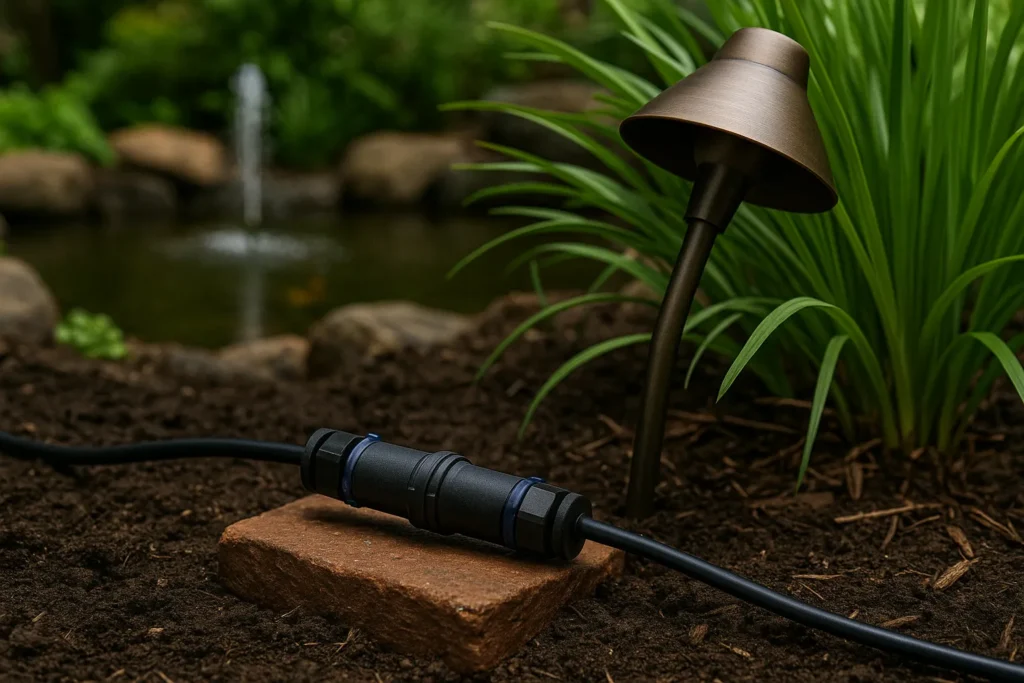
Use the Right Equipment for the Outdoors
Make sure every light you install is rated for outdoor use. Indoor lights aren’t built to handle rain, dust, or temperature changes and can become a safety risk. Check product labels for waterproof or weather-resistant markings, and always use outdoor-rated extension cords and connectors if needed.
Protect Against Water and Weather
If your lights are near sprinklers, ponds, or garden beds, extra care is essential. Use waterproof cable connectors, secure fixtures to stable surfaces, and keep all electrical components raised slightly above ground level to avoid flooding or soil contact.
Keep Open Flames Safe
Fire pits, candles, and other flame-based features can add warmth and charm, but they need space to breathe. Always place them away from dry plants, furniture, or fabrics. Never leave flames unattended, and consider placing lights around the area to improve visibility and avoid accidents.
Test and Inspect Regularly
Walk through your garden at night every so often to check for flickering bulbs, exposed wires, or loose fittings. Early fixes prevent bigger problems and help keep your setup safe and dependable.
Just with a bit of care, your outdoor lighting can bring beauty and comfort without any of the headaches.
Illuminate Your Evenings
Your outdoor space shouldn’t go quiet when the sun goes down. With the right lighting, your garden can glow with charm, comfort, and personality well into the evening. Create a place you want to spend time in, night after night.
Maybe it’s a soft glow under your favourite tree, a few string lights over your pergola, or path lights guiding the way across your lawn. Each light adds a layer of warmth, depth, and atmosphere that transforms the space.
Try adding just one lighting element today. Step outside and see how it changes the feel of your garden. Before long, you might find yourself looking forward to evenings spent under a sky full of stars and the soft glow of a space you’ve made your own.
Need help bringing your vision to life? Visit us at designmartus.com for lighting tips, tools, and expert ideas.




